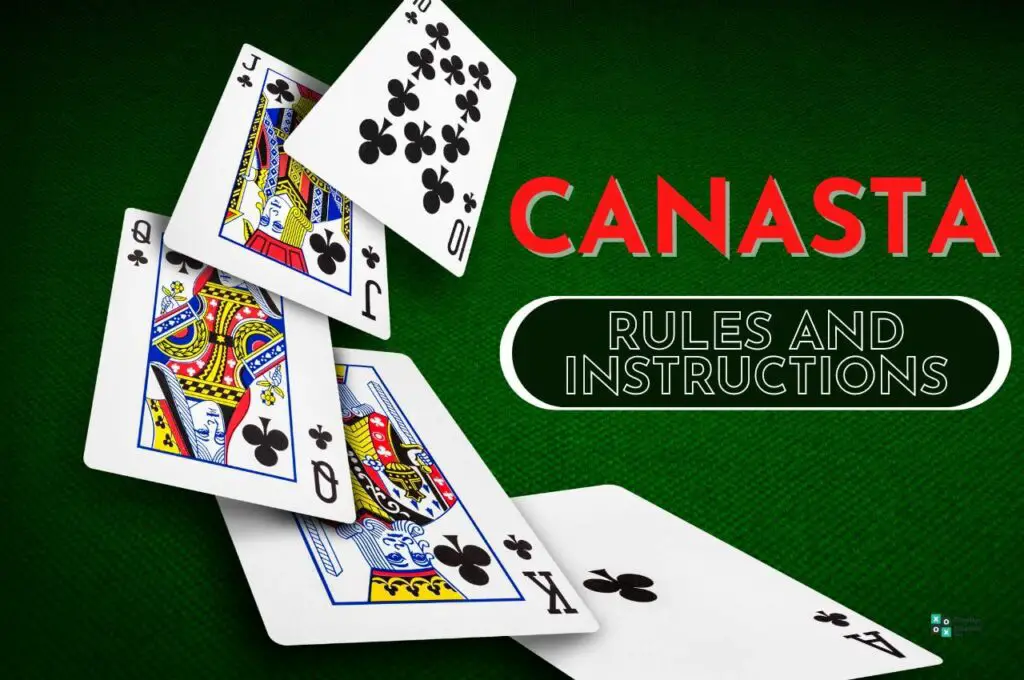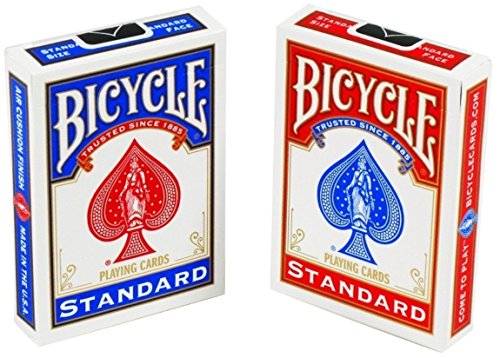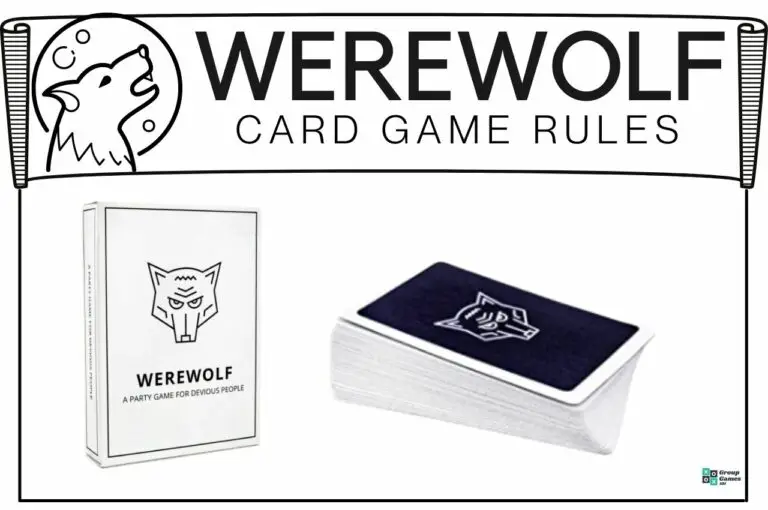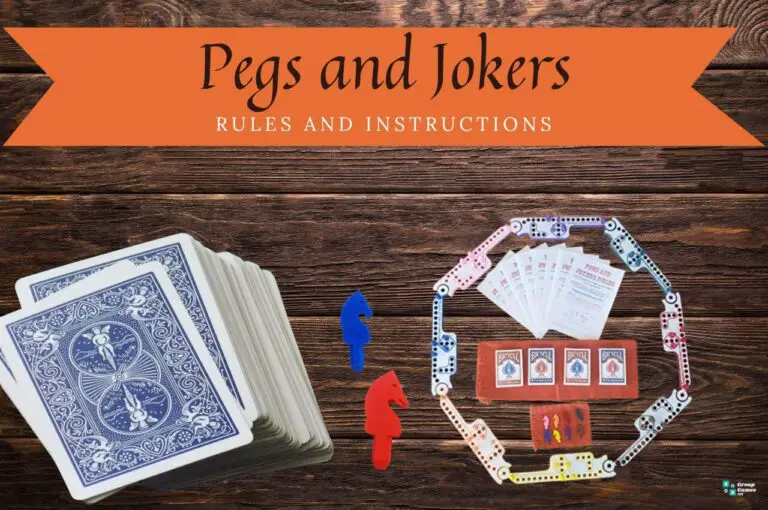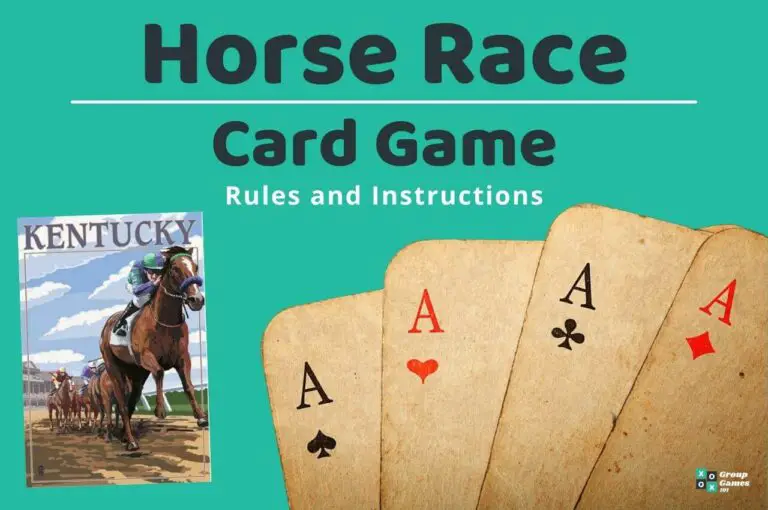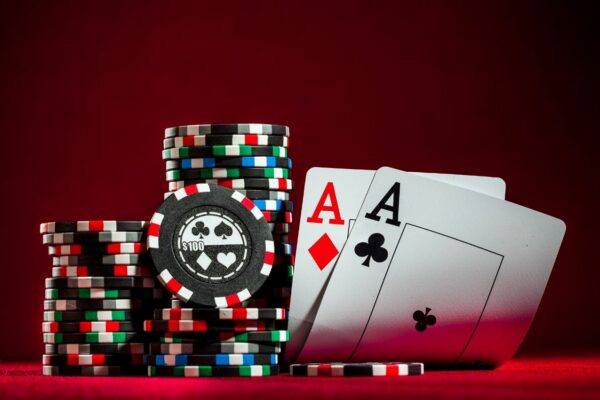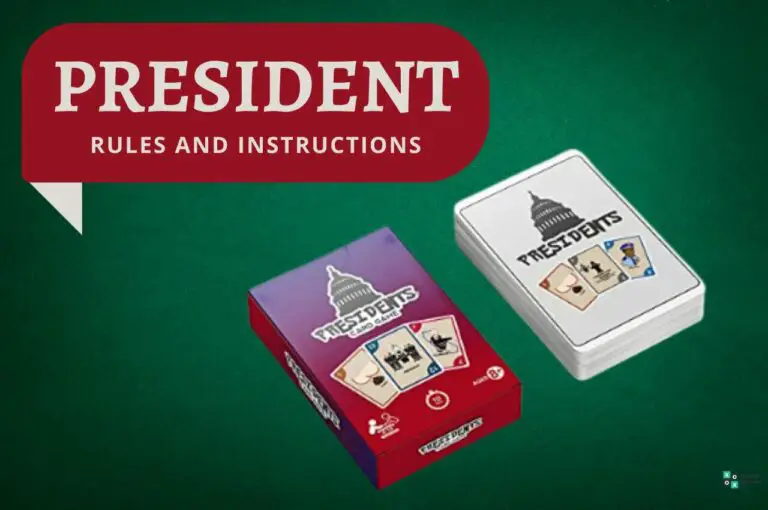Legendarily intricate Canasta is a queen of traditional card games. Everyone has heard of it, but not so many know how to play it. If you want to learn the game, this Canasta rules guide is just what you need.
Canasta is a classic rummy-style game with a long history and dozens of variations. Popular modern games like Joker or Wizzard (see Joker rules and Wizzard rules for comparison) are all considered related to Canasta and share many similarities.
But even if you have experience with other similar games, Canasta might still surprise you with its complexity and various specifics.
First of all, you’ll see that there are many interpretations of the Canasta rules (sometimes even contradicting each other), so before you start playing, make sure that you and your mates are on the same page. It might also be worthwhile getting to grips with many of the Canasta terms too!
This Canasta gameplay guide will cover mainly the most popular version of the game for four players divided into two teams. Nevertheless, I will also briefly mention some other popular versions of the game towards the end.
This Canasta rules guide will cover the following:
- What is Canasta?
- A brief history of Canasta
- What you’ll need to play Canasta
- Canasta rules
- How to play Canasta (video tutorial)
- FAQs
- Other similar games to Canasta (our guides)
Read on and learn how to play Canasta one step at a time.
What is Canasta?
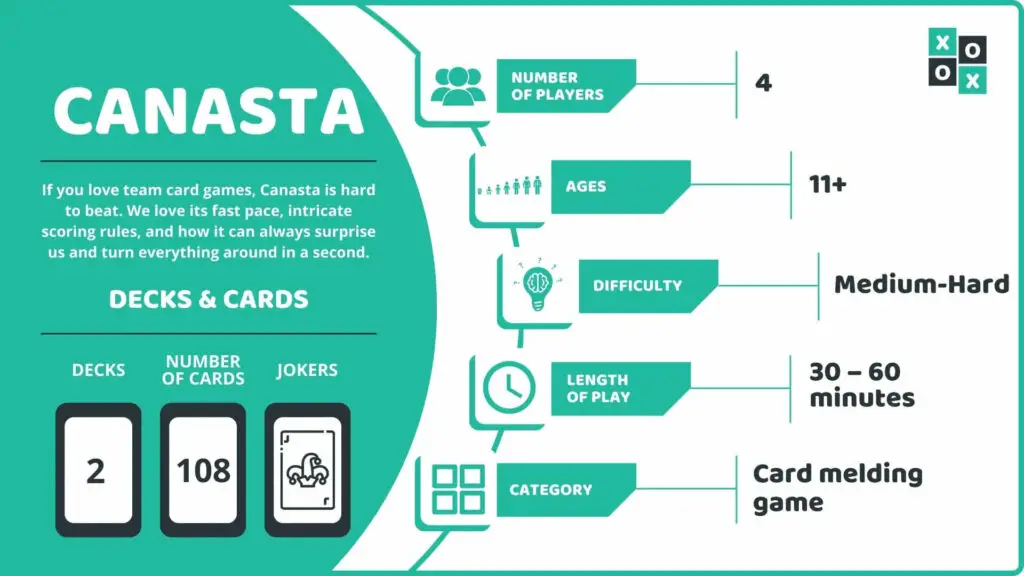
Canasta is a card melding game, which means that your task is to create groups of cards based on specific shared characteristics.
In the classic Canasta version, the desired common feature is the ranking of the cards, so you’re collecting matching face and number cards and displaying them on the table.
Nevertheless, the real fun begins when you try to comply with all the rules, conditions, restrictions, scoring, and penalty directions in the game. No wonder Canasta is believed to be one of the most complex card games in the world.
Despite all the difficulties, rest assured that this game is truly worth the effort. In fact, all you need to master Canasta is patience and a lot of practice.
Number of Players: 4 (or 2 – 3 players with some adjustments)
Ages: 11+
Difficulty: Moderate to difficult
Length of Play: 30 – 60 minutes
Category: Card melding game
Similar to: Joker, Wizzard, Pinochle
Main Objective: The objective of this game is to be the first team to score 5,000 points.
Why We Love It: If you love team card games, Canasta is hard to beat. We love its fast pace, intricate scoring rules, and how it can always surprise us and turn everything around in a second.
A brief history of Canasta
Like other rummy-style games, Canasta is believed to be derived from a historic game called 500 rum. But unlike many other games naturally developed by players in pubs or casinos, Canasta was purposefully designed by two prominent Uruguayans in 1939.
Lawyer Segundo Sanchez Santos and architect Alberto Serratoy tried to create a game as immersive as Bridge but faster and more dynamic. Canasta, first adopted by a local card club in Montevideo, was popular from the start and quickly spread across the borders.
Ever wondered what the name Canasta actually means? Well, it’s a Spanish word for “basket,” and according to various sources, the game’s founders came up with it spontaneously while sitting in a restaurant and chose it just because it sounds nice.
A fun fact – Despite the enormous popularity Canasta gained over the years, Santos and Serratoy never earned a peso for it, calling it their gift to the world instead.
What You’ll Need to Play Canasta
To play Canasta, you will need:
- Two standard decks of 52 cards and a total of four Joker cards
Moreover, you will also need a notebook and pen to record your scores.
If you want to play in style and make sure that you’re not missing anything important, you can also buy:
- Ready-to-play Canasta game set with cards, a card stand, and a set of handy scorecards.
Canasta Rules and Gameplay
As I have already mentioned earlier, this rules guide will primarily focus on a classic four-player Canasta game because it is the most common and popular version.
Nevertheless, even if you’re looking for a different subtype of Canasta, these step-by-step rules will give you an accurate idea of how this game works and its principles.
Starting the Game
First, the players need to form two equal teams (also called ‘partnerships’). Then, they will sit around the table opposite their teammates during the whole gameplay.
Next, appoint the dealer and start dealing the cards:
- Each player receives 11 cards dealt one at a time. They keep them hidden from other players, including their teammates.
- Place the remaining cards in the center to form a draw pile.
- Flip the top card from the draw pile and place it face-up next to it. This will be your discard pile.
Now you’re almost ready to start playing, but first, let’s take a look at how you can create melds and how various special cards can affect the gameplay.
Melds and special cards
- You and your teammate need to meld cards of the same rank together to score points. Each such meld must contain at least three cards.
- Jokers and twos are wild cards. You can add them to any meld. However, keep in mind that a meld can never (at any point) contain more wild cards than natural number cards.
Once you meld a wild card, you cannot move it again. If you discard a wild card, place it sideways. This card can only be drawn by a player who can form a meld without it.
If you draw a wild card from the draw pile, discard it immediately (placing it sideways on the discard pile). The discard rules mentioned earlier apply here too.
- Red three is a special card in Canasta. If a player receives it or draws it during the game, he must immediately play it on the table and replace it with another card from the deck.
If you draw the red three from a draw pile, discard it immediately and draw another card.
- Black three is also a special card. When someone discards black three, it blocks the discard pile from being used (see more details on this below), so the players can only take cards from the draw pile.
The ‘spell’ will break once someone discards another card on the top of it. If you draw a black three from the draw pile, the same rule applies as when you draw a red three.
Black threes can only be melded if the player is going out (ending the round) immediately after that.
Each card also is associated with a certain number of points. I will get to this in detail in the Scoring section below.
How to Play Canasta
The player sitting left of the dealer takes turns first. Unless he immediately needs to play a red three, his (and every other) turn starts with the player drawing a card:
- Usually, you draw a card from the draw pile.
- You can also draw a card from the discard pile, but only if you immediately plan to use it to form a meld (or later in the game, add it to an existing meld).
- If you choose to draw a card from the discard pile, you must take the whole pile. Of course, you can use any cards in it to form your melds.
- When the player draws a card of his choice, he tries to form a meld of three equally ranked cards (e.g., 3 x Kings).
- If you can form a meld, you will place it face-up on the table.
- You can also add a card to the meld of your partner.
- If you can form more than one meld, you can do it all in a single turn. You can also create a new meld and add a card to an older meld within one turn.
- Whether you manage to form a meld or not, you must finish your turn by discarding one card of your choice on the discard pile.
- The gameplay continues until someone manages to form a canasta.
Canasta
Canasta is a meld of 7 cards with equal ranking. Clearly, it is unlikely to form a canasta directly in your hand. Usually, you must complete it gradually by adding cards to your or your teammate’s meld during the gameplay.
Once a team has a canasta, one of the teammates can go out and close the round. A player must end up with no more cards in his hand after ending his turn to go out.
Before going out, the player asks his teammate whether he should or should not end the round. Sometimes, when your partner has great cards in hand, he might want the game to continue instead.
Canasta Scoring
Scoring is undoubtedly the most intricate and most important part of the Canasta game. To make it clearer, let’s divide the scoring into four areas:
Value of cards
Each card has its own point value. It goes as follows:
- Black Threes: 5
- Fours to Sevens: 5
- Eights to Kings: 10
- Aces and Twos: 20
- Jokers: 50
Each team counts the points of all melded cards in their possession (so-called meld value). Then they deduct the value of the cards left in their hands (hand value) to get their total cards score.
Canasta values
Canasta can be either natural if it contains only number/face cards or mixed if it also contains some wild cards. Their value is different.
- Natural Canasta: 500 points
- Mixed Canasta: 300 points
Note that a meld can have more than seven cards, but any new cards above Canasta will only be counted by their primary card value.
Red threes
Collected red threes are another source of points. If the team has all four of them, his score is doubled.
Each red card number 3 – 100 points
All four red cards number 3 – 800 points
If a team has no melds at all when their opponents end the round, the value of their red threes will be deducted from their current total score.
Going out
The team that terminated the round by going out scores 100 extra points.
Each team counts all their points and writes them into the scorecard. The game continues with as many rounds as needed until one of the teams scores 5,000 points. The team who scores 5,000 points wins the whole game.
Rules for melds
So far, so good, right? But it’s not that easy with Canasta. Besides the scoring and unique functionality of several cards, you must also follow some special rules for melding.
The player’s first meld on the table must have a prescribed minimum value. It is determined based on the team’s current score as follows:
- Team has <1,500 points = The first meld must be at least 50 points worth
- 1,500 – 2,999 points = The first meld must be at least 90 points worth
- Team has >3000 points = The first meld must be at least 120 points worth
Yes, the further you get in this game, the harder it is to continue! But don’t worry, the more you practice Canasta, the easier it becomes to get used to all the rules and score points.
My tip: Print out these rules and have them at hand for the first couple of rounds. It is very easy to forget some rules or get confused when you’re new to Canasta.
Penalties
If a player/team does not comply with the rules (intentionally or unintentionally), he will be penalized for losing some of his points. Besides the remaining cards in hand when the round ends, these are the most common reasons for penalties:
- Incomplete canasta of wild cards: If you finish the round without completing a wild cards canasta from a meld laid out on the table, the penalty is 2,000 points
- Four jokers in a wild card meld: If four jokers are present in the wild card meld, there is a penalty of 2,500 points
- Three or more Aces in hand: If three or more Aces are in a player’s hand when the round closes, he loses 1,500 points
- Incomplete Canasta of Aces: If the round ends and there is an incomplete meld of Aces on the table, the responsible team pays 2,500 points
- Red three not revealed: If a player draws or receives red three and fails to declare it before the round ends, he is penalized 500 points.
- False request to go out: If a player asks his partner to go out, receives a positive answer but then finds out he cannot or doesn’t want to go out, the penalty is 100 points.
There are many other penalties that can be applied to players in Canasta in certain situations. Some players, however, like to play the game without them altogether or use only a few of them.
Some penalties can even have a completely different nature. For example, if a player reveals any of his cards to other players (including his partner), the exposed cards must be placed face-up on the table and discarded by the player one by one over his next turns.
Also, if a player adds more wild cards into a meld than allowed, he must either move them to another meld on the table or discard the excessive wild card(s) on his next turn(s).
Alternative Canasta rules
As I’ve already mentioned earlier, there are many different ways to interpret Canasta rules and numerous alternative versions of the game itself. In this section, I will briefly cover at some of them.
Two-Player Canasta
Don’t have three friends at hand to play a regular four-player Canasta? Don’t worry; you can enjoy the game in a pair too, with several alternations:
- There are no teams; each player plays for himself.
- Each player gets 15 cards at the beginning.
- Before going out, a player must collect at least two full canastas.
- A player draws two cards from the draw pile and discards just one.
- Penalties for insufficient melds do not apply.
Three-Player Canasta
- Each player is dealt 13 cards at the beginning.
- Again, players play for themselves; there are no teams.
- The rest of the rules remains the same.
Samba
If you find classic Canasta too simple or short, try Samba, one of the most popular variations of this game. Here’s a short summary of the differences between the two:
- Samba is played with three decks of cards and six Jokers.
- Besides the cards with equal ranks, Samba allows melding of the same suit sequences too. Each must contain at least three cards.
- Melds cannot contain more than two wild cards.
- The seven-card sequence is called Samba, and, just like Canasta, it allows a team to go out. You score 1,500 points for each Samba.
- The team must score at least 10,000 points to win the game.
Bolivia
- Just like Samba, Bolivia is played with three decks and six jokers.
- It is also allowed to meld sequences in Bolivia.
- A team must have at least one Samba and one Canasta to go out.
- The team must score at least 15,000 points to win the game.
American Canasta
This is probably the most widespread alternative to classic Canasta and the one with the most differences and additions compared to the original. It is not recommended for beginners but poses a welcomed challenge for experienced players.
Here is an overview of the most important differences:
- Each player is dealt 13 cards.
- Initial meld requirements, number of drawn cards, the required number of canastas for going out, and score threshold for winning the game are identical to the original game version.
- The discard pile cannot be frozen.
- You cannot take the discard pile and make your team’s first meld on the same turn. Make the initial meld first instead.
- Red threes and wild cards cannot be discarded.
- If the discard pile is empty, players cannot discard sevens, only if this was the player’s only remaining card.
- Melds that do not include aces or sevens are considered classic canastas. They can, however, have a maximum of two wild cards.
- A team can only form one meld of the same rank.
- Melds of more than seven cards are forbidden except for going out by adding the eighth card.
- No sequences (like in Samba or Bolivia) are allowed.
- Melds of sevens are not allowed to contain any wild cards. On the other hand, a canasta of sevens is worth 2,500 points (5-times more than other canastas).
- Holding three or more sevens in hand when the round ends is also strictly penalized with a deduction of 1,500 points.
- You can also form melds entirely of wild cards. A wild card canasta is worth 2,000 points if mixed, 2,500 if it contains all jokers, and 3,000 if it contains only twos.
- The team’s first (and only) meld can also consist of a Special hand. It ends the round immediately, leaving the team only with the score from this single hand. Special hands contain precisely 14 cards of different combinations (e.g., one of each rank plus a joker, seven pairs, two sets of four plus two sets of three, etc.)
There are many other variations of Canasta all around the world. Once you master the basic game, search for the variation you and your friends will like the most.
Remember that each version of Canasta can have many variations too, so it’s always good to agree on standard rules and interpretations before you start playing with new pals.
How to Play Canasta – Video Tutorial
Canasta Frequently Asked Questions
Can you play Canasta with one deck of cards?
Canasta is traditionally played with two decks of 52 cards and four Jokers. With a single deck of cards, you don’t have enough meld possibilities for two teams of two players.
What do you do when you run out of stock cards in Canasta?
If a draw pile, also known as stock, is exhausted, players continue using a discard pile as long as possible. Once they are stuck with no more options, the round ends just like if someone would go out.
What is a dirty Canasta?
Dirty Canasta is another name for mixed Canasta. It is a canasta (a meld of seven cards) containing both number/face cards and wild cards. This Canasta is worth fewer points in the final scoring. Keep in mind that it cannot contain more wild cards than normal cards.
See More: Canasta FAQs
Other Similar Games to Canasta (Our Guides)
Are you looking for more challenging card games for genuinely competitive players? Check out our guides for the following Canasta alternatives:
- Hand Knee and Foot card game
- Conquian rules
- Tonk rules
- Scopa rules
- Kemps card game rules
- Sheepshead rules
- Big 2 rules
- Biriba game rules
- Rummy rules (guide coming soon)
- Tichu rules (guide coming soon)

